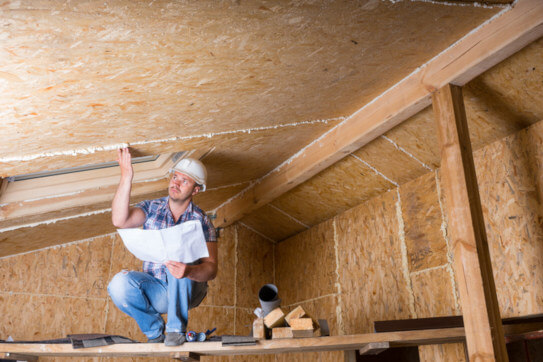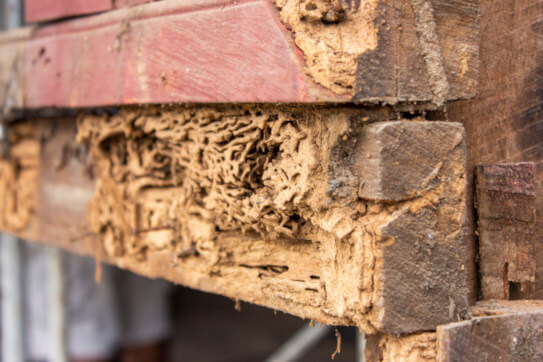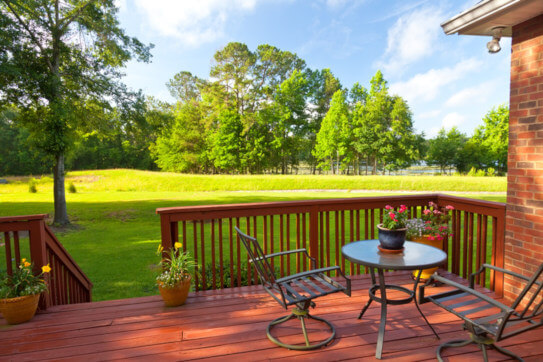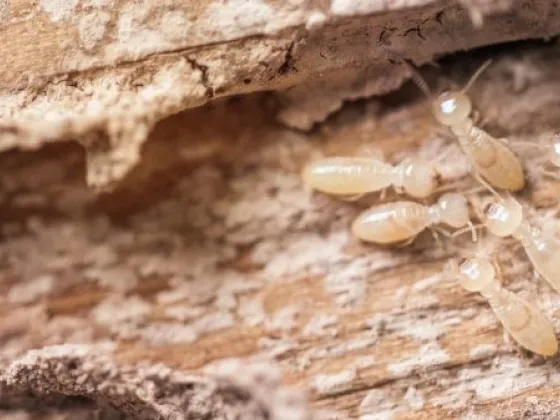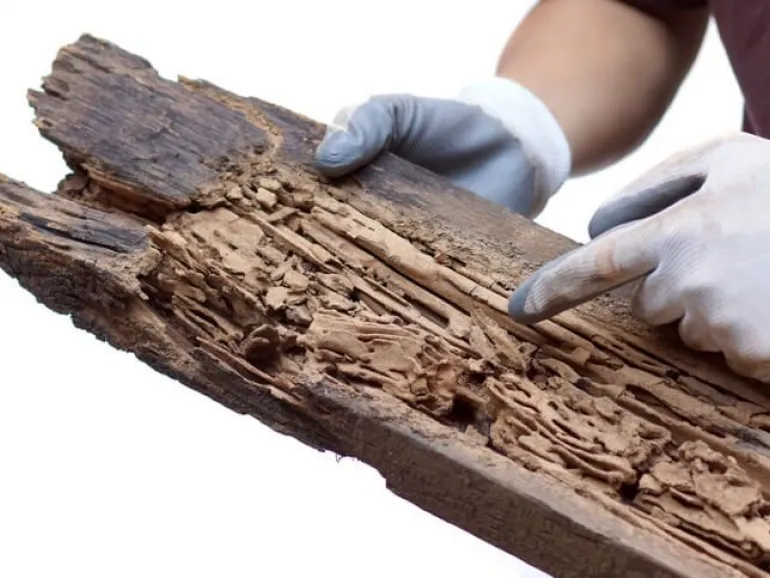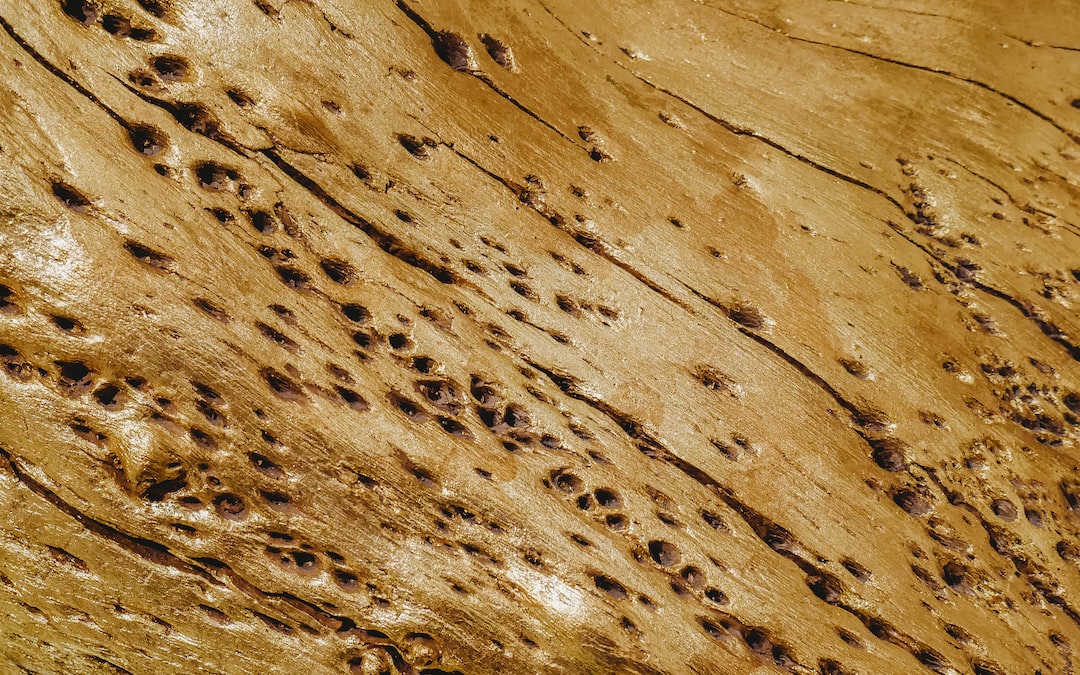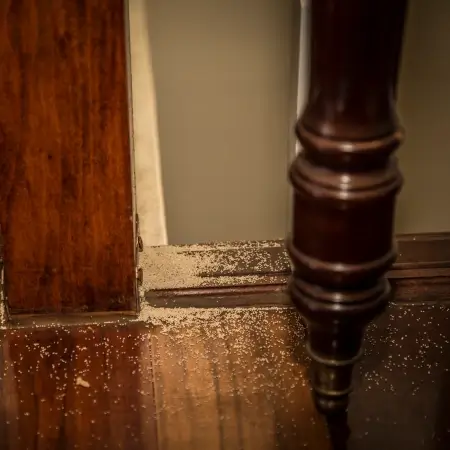5 Reasons to Call for a Termite Inspection
Termites are a constant threat to homes and, if left untreated, can cause irreparable damage. If you're not sure what signs to look for, take a look at these five reasons termite inspection is worth the cost. It's never too early (or late!) to start planning your home defense!
1. Consider Termite Inspections if You Want to Buy a House
In a real estate transaction, the first time you consider making an offer on a house that you are interested in buying, pause. At least long enough to contact a pest control team for a thorough termite inspection. It is always better to be safe than sorry.
Unfortunately, wood destroying organisms like termites can do serious damage before they are detected by the average homeowner. Subterranean termites and similar insects spend most of their life spans hidden from sight, doing what they do best: destroying property under the surface of your home or business foundation.
For this reason alone, it pays to have your potential purchase checked by a termite inspector. Otherwise, you won't know until it is too late that there is termite damage. With proper termite inspections, you can also know whether what you find are simply some termite droppings or if you have a full-blown infestation.
Aside from wood damage, however, subterranean termites can pose other risks. A thorough termite inspection will check not only for active termites but also for any evidence of past damage or previous termite activity that may have weakened your structural foundation.
Since they do most of their eating below ground level, this type of pest is often invisible until termite damage to your home or business property is already significant. Subterranean termites excavate tunnels too and usually come out at night when people are sleeping.
You also have to remember that, in the end, the termite inspection cost is almost always cheaper than an extensive repair of your house because the property damage is already severe.
2. There Are Common Signs of a Termite Infestation
What are the signs of termites? Generally, termite infestations involve more than one colony and may develop over a period of years. The only sure way to find out if you have termites is to get an inspection by a professional. Here are some clues that suggest you have an infestation:
- Wood that sounds hollow when tapped with a hammer or wood that has developed "shake" due to advanced termite damage. Common hiding places for colonies include sills, window and door frames, beams, posts, utility poles, and fence posts.
- Damaged wood in which mud tubes (galleries) can be found. These mud tubes are formed by the workers trying to stay moist while they travel back and forth between the soil and their food source within your home's structural wood members.
- Tunnels through insulation. Subterranean termites can also build mud tubes within the walls in an attempt to avoid lights and dry conditions. This is usually seen in older buildings when the insulation has been installed around water pipes, etc., or where there has been recent remodeling activity. It can also be seen when exterior walls are opened for repairs.
- Protective mud tubes on foundation walls, piers, and other wood members adjacent to the soil. As termites excavate their tunnels, they maintain a moist environment by building earthen (mud) shelter tubes that run from the ground up into your structure's framing, flooring, or roof beams. These tubes provide protection against environmental extremes such as drying out or exposure to direct sunlight. They can remain intact long after the termite colony has been eliminated.
Before companies treat infestations, they usually perform two-fold termite inspections to confirm or refute the presence of these insects:
- A visual (outward) inspection is conducted. They look for visible signs of a termite infestation outside by examining the structure, soil, and vegetation near your building. Termite inspectors will look for the presence of these insects like mud shelter tubes on foundation walls, window sills, and other wood in contact with the ground.
- A pest control company may perform a more thorough, destructive (inward) structural inspection when no outward termite infestation signs are readily accessible or visible. This examination inspects for termite activity inside walls, flooring, and ceilings using various non-destructive techniques such as "termite monitors." These devices detect the elevated temperature of termite tunnels. Subterranean and drywood termites are "cold-blooded" insects. They can't maintain their body temperature, so when they gain access to your home's wood members, they are seeking the warmth generated by the home itself. By monitoring for their presence with a device that senses temperature, an inspector might discover evidence of infestation.
3. Consider Termite Control Before Selling the House
In a real estate transaction, a termite inspection is a smart way of ensuring that you will not have any unexpected costs when presenting the house to prospective buyers. You can confidently tell your buyers that there is no risk of the buyer incurring future costs associated with termites or dealing with future infestations.
In many cases, people add a small amount into their asking price because they know that reports from a reputable pest control company are always going to be worth it in the long run. Also, being upfront about your efforts to keep your house free from termite activity only increases the sales value and reduces stress later on for all parties involved.
What Must I Do Exactly During a Termite Inspection?
Termite inspections usually begin by inspecting all accessible roof, crawl spaces, window wells, or garden beds where termites might enter your home. They will check for gaps, cracks, and other entry points around the lower section of the building, especially one that has soil contact.
After that, the inspector will start looking for signs of termite infestation in or near moist areas such as exterior walls where water pipes are fitted, main drains and sewage systems, foundation areas, and finishes or even tree stumps within a few meters from these access points. They may also check the surrounding property.
In addition to this, they will inspect surrounding soil for a definite sign of termites by digging up any mulch, which has been laid into garden beds nearby. This is done because termites can use mulch as a food source that they then transport into your house through their galleries, eventually leading to an infestation indoors.
Termite Treatment
What chemicals are used for an inspection and treatment plan? A standard pre-listing termite inspection will usually treat open holes or cracks with a specialized borate product. It deters termites from chewing through treated wood.
This is applied directly to the area where their activity has been found. Usually, this process does not require any further treatment or follow-up work as it prevents pests from entering that spot in the future. The chemical helps protect your home for two to five years.
Expect treatments to be more intensive and thorough depending on the severity of the problem you are facing. After inspection areas are selected, they will be drilled out followed by insertion of an insecticide dust under pressure, much like putting toothpaste back into its tube after squeezing some out. This treatment is much more effective in killing both foraging termites and those within the galleries in your home.
4. There's Presence of Wood, a Favorite of Drywood and Subterranean Termites
What are termites interested in a wooden food source? To begin, let's define the termites' favorite food: wood. Wood is made up of cellulose fibers held together by a lignin binder. This combination makes it very difficult for most organisms to digest.
Termites, however, have evolved with special "microorganisms" in their gut, which help them to break down the tough wood fibers and utilize the nutrients within. These microorganisms are also what allow termites to eat things like cardboard or paper products.
How do Termites Eat Wood?
The process begins in the mouth where mandibles chew and grind wood into smaller pieces, so it can be digested more easily by enzymes in the gut. Termites then take these tiny pieces of wood and feed them to protozoans in their hind gut (referred to as the "crop" where digestion begins, similar to our stomach). These protozoans secrete enzymes that break down the cellulose fibers into smaller molecules, which are then absorbed by the termite.
Now, what structures do termites eat? The next step is for the termite to pass this partially digested food further down its digestive tract several times through different chambers until it finally reaches the intestine, where absorption takes place.
Around 95% of what's eaten ends up being excreted by the termite in pellets called frass. This process can take several weeks, depending on the size of the colony and species.
How Long Does It Take for Termites to Eat Wood?
Termites may take anywhere from a few months to several years to completely consume one wooden support beam or tree trunk. To put this in perspective, dry wood weighs around 27 pounds per cubic foot, but after being consumed by termites, it will weigh less than half that amount (around 13 pounds).
What happens if you remove termite-eaten wood before the termites are finished eating? If you remove termite-infested wood while the termites are still digesting it, there is a high chance they will abandon their meal and search out new food sources.
5. You Live in a Wooded Area
Most termites are found in warm climates. However, they can also be found in wooded areas of temperate climates where insulation is needed for survival. They are most abundant in the tropics and subtropics, particularly around the equator.
To understand even better why this is their preferred habitat, you may want to know the typical termite life cycle:
- The termite life cycle begins with an egg, which hatches into a wingless reproductive nymph that looks like a white worm.
- It then develops through several stages until it becomes a winged reproductive adult. Usually, within hours of shedding its skin to become an adult, the newly developed winged male or female locates another individual and mates.
- After mating, they lose their wings along with their ability to reproduce. The male usually dies shortly after mating and the female eventually dies after she lays her eggs.
Termites, like most insects, have complete metamorphosis. They hatch from eggs into a nymph stage that looks like a smaller version of an adult insect. This immature form molts (sheds its skin) five times before becoming an adult termite capable of reproduction. The length of time it takes for this metamorphosis to occur depends upon environmental factors such as food supply and temperature.
A combination of temperature and moisture conditions determines the developmental rate in dry areas with limited food sources and in cool climates with reduced heat units. Thus, in deserts and cold regions with limited food sources, development may take several years, while in warm moist climates with abundant food, development may take only a few months.
In the end, when it comes to termite control, prevention is the best measure. That means taking steps before signing on that final dotted line to protect your most valuable asset: your home or business property.
Call in the pros for a professional termite inspection and assessment of risk factors. Use AllTermites.com to find a pest control company near you and get free termite inspections. This way, you can make an informed decision about how to proceed to ensure maximum protection against future structural damage.
